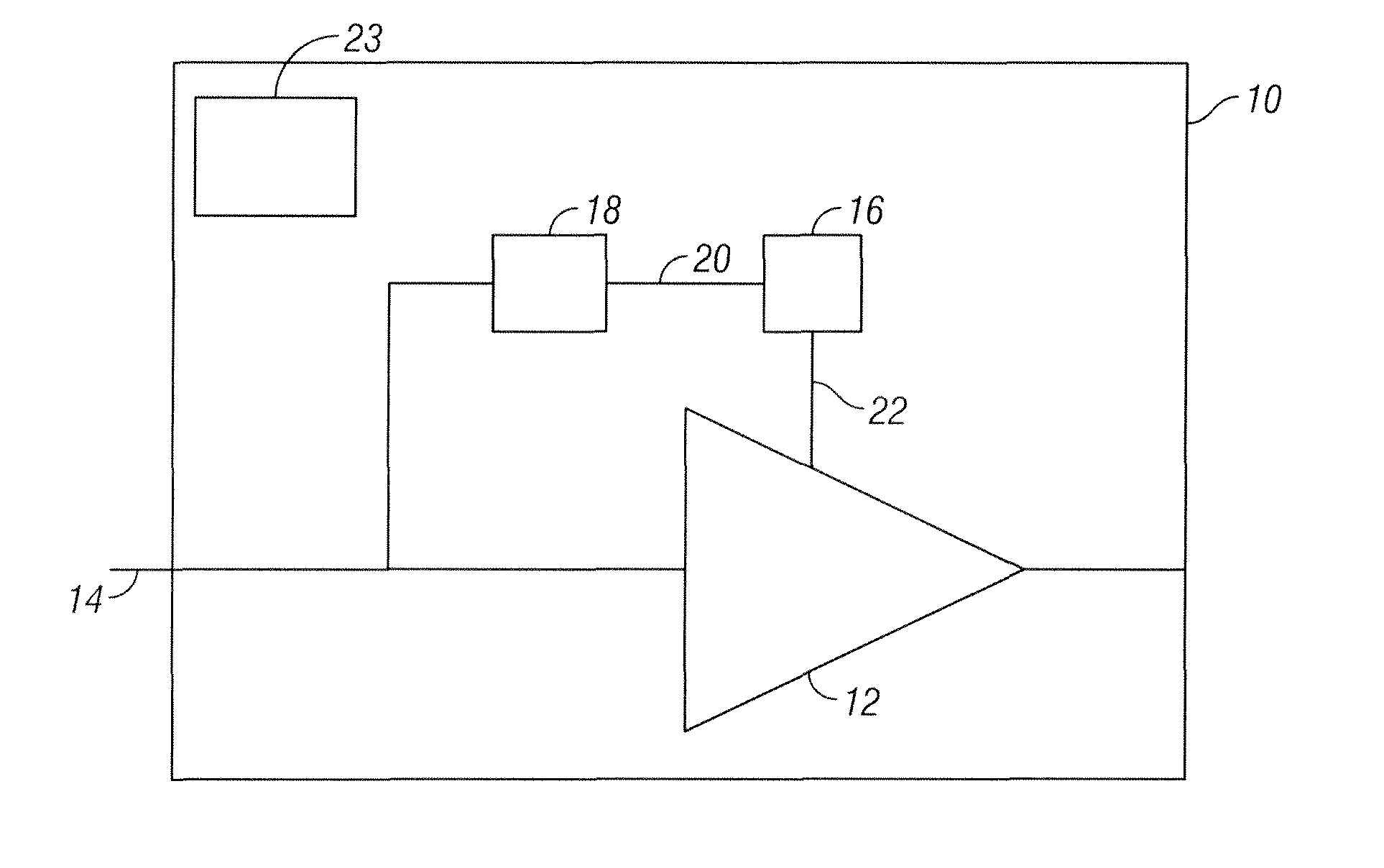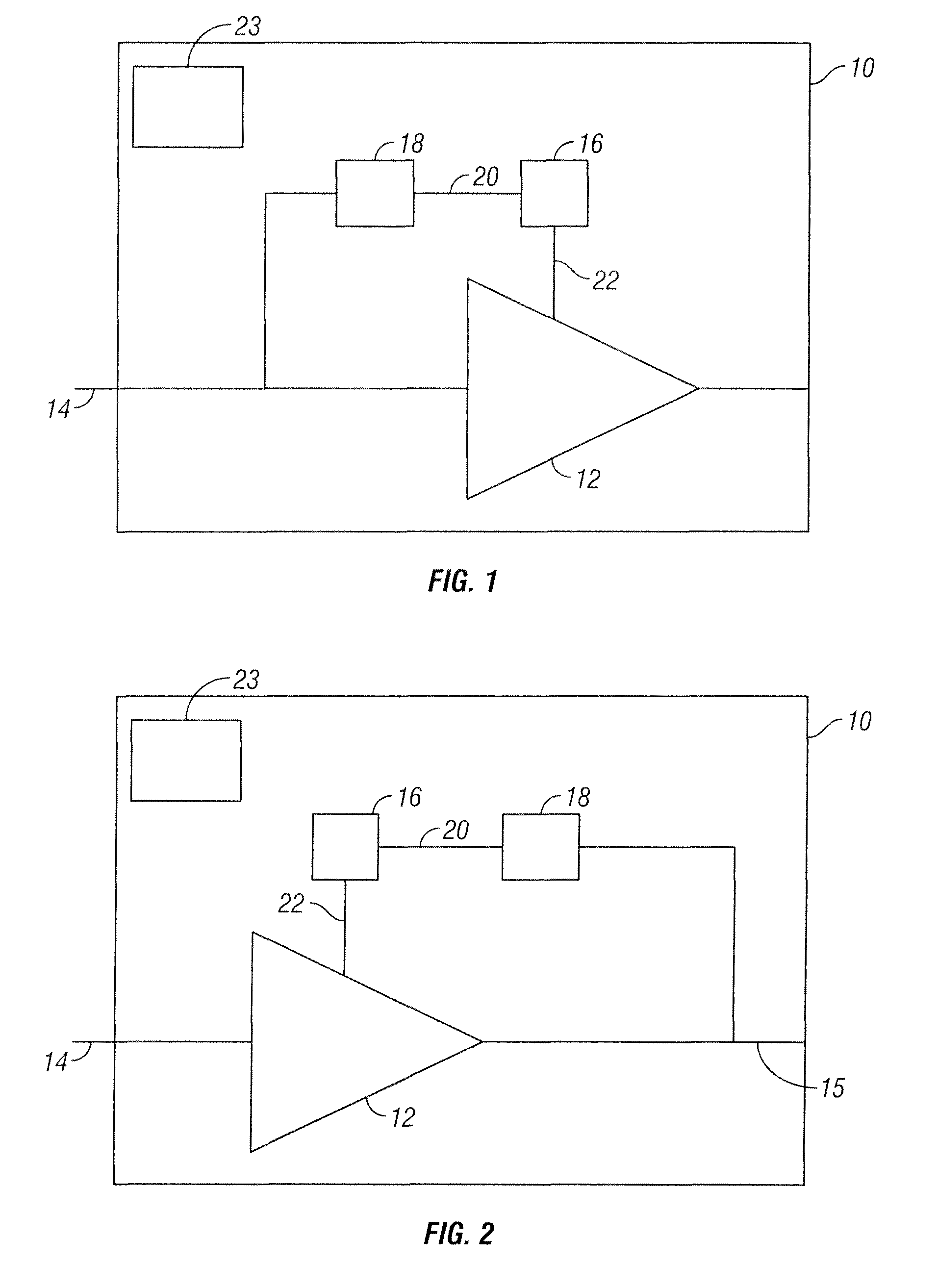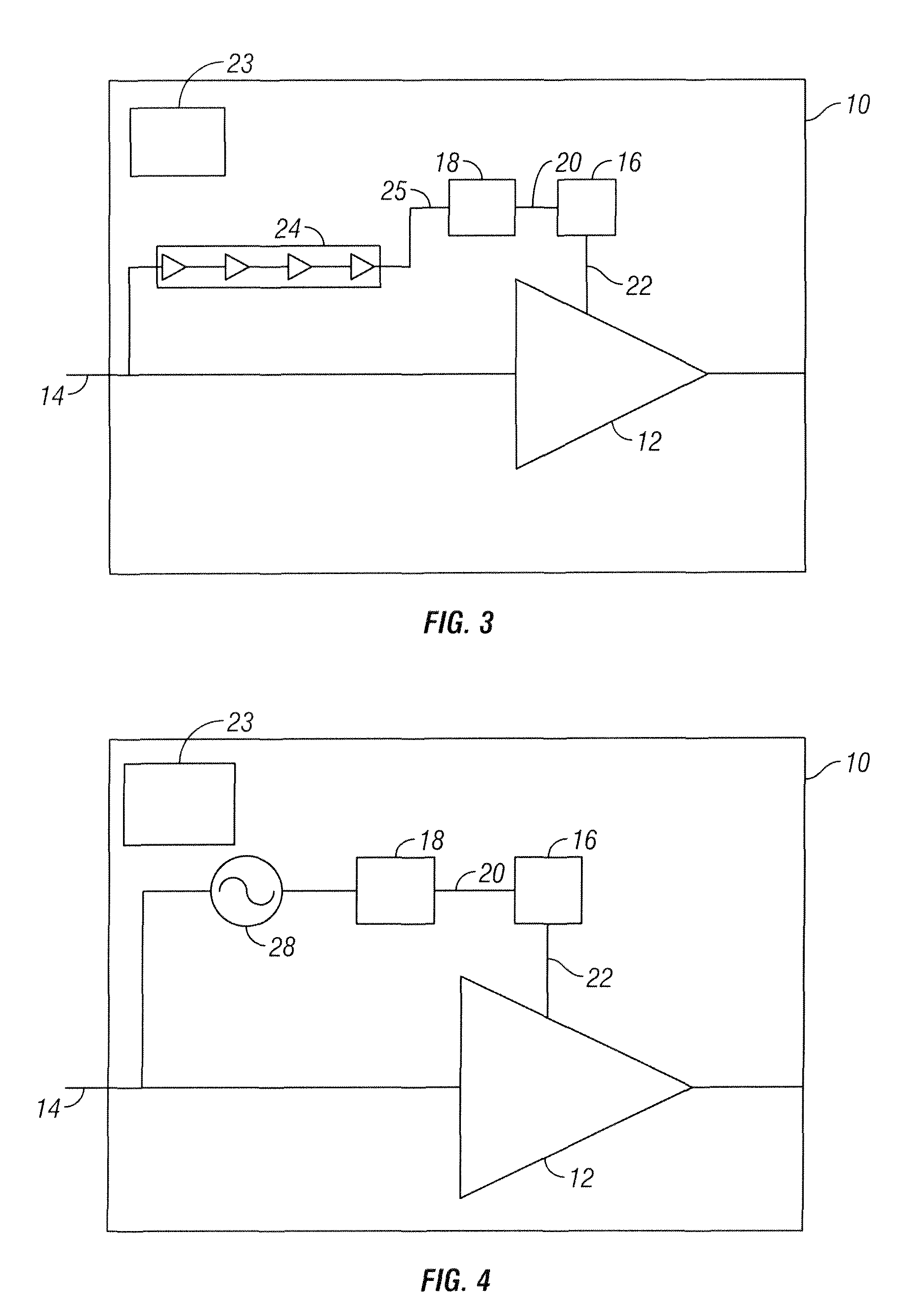DC-DC conversion for a power amplifier using the RF input
a power amplifier and input technology, applied in the direction of amplifiers, amplifiers with semiconductor devices only, amplifiers with semiconductor devices, etc., can solve the problems of capacitors used that cannot store significant amounts of energy, waste power, and waste of available supply voltage rang
- Summary
- Abstract
- Description
- Claims
- Application Information
AI Technical Summary
Benefits of technology
Problems solved by technology
Method used
Image
Examples
Embodiment Construction
[0029]In one embodiment of the present invention, as illustrated in FIG. 1, a power amplifier system 10 includes a power amplifier 12 configured to receive an RF input 14. A DC-DC converter 16 is coupled to the power amplifier 12. Clocking circuits 18 drive the DC-DC converter 16. The clocking circuits 18 use the RF input 14 to generate a clock 20. The clock 20 acts with the DC-DC converter 16 to provide an output voltage 22 used in the power amplifier 12. The clocking circuits 18 square up the RF input to generate the clock 20. In one embodiment, the clock 20 is between high and low bands of the power amplifier 12 to minimize the clock interference of the high and low bands. A digital serial interface 23 can be included to control the clock 20. The serial interface is used to program registers which change settings in the circuits enabling us to change performance, for instance, decreasing the number of stages of division to get a higher frequency clock.
[0030]In another embodiment ...
PUM
 Login to View More
Login to View More Abstract
Description
Claims
Application Information
 Login to View More
Login to View More - Generate Ideas
- Intellectual Property
- Life Sciences
- Materials
- Tech Scout
- Unparalleled Data Quality
- Higher Quality Content
- 60% Fewer Hallucinations
Browse by: Latest US Patents, China's latest patents, Technical Efficacy Thesaurus, Application Domain, Technology Topic, Popular Technical Reports.
© 2025 PatSnap. All rights reserved.Legal|Privacy policy|Modern Slavery Act Transparency Statement|Sitemap|About US| Contact US: help@patsnap.com



